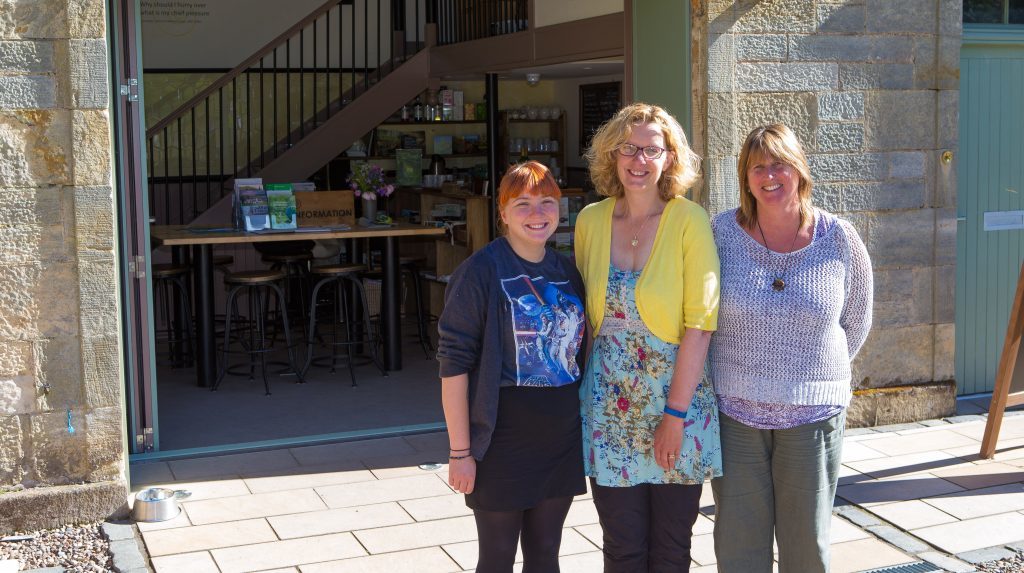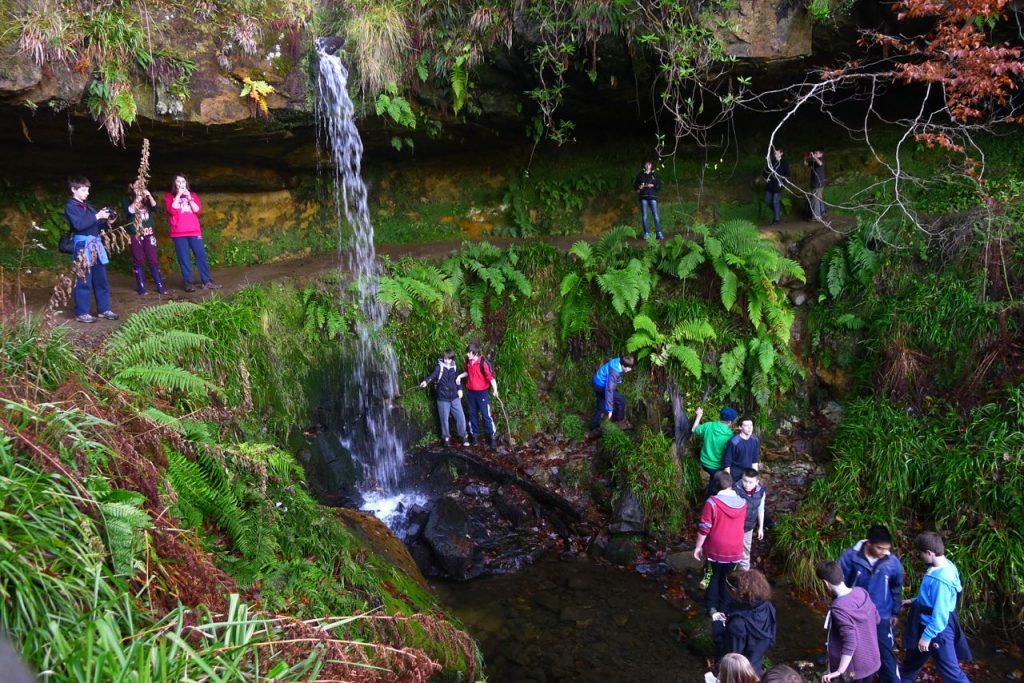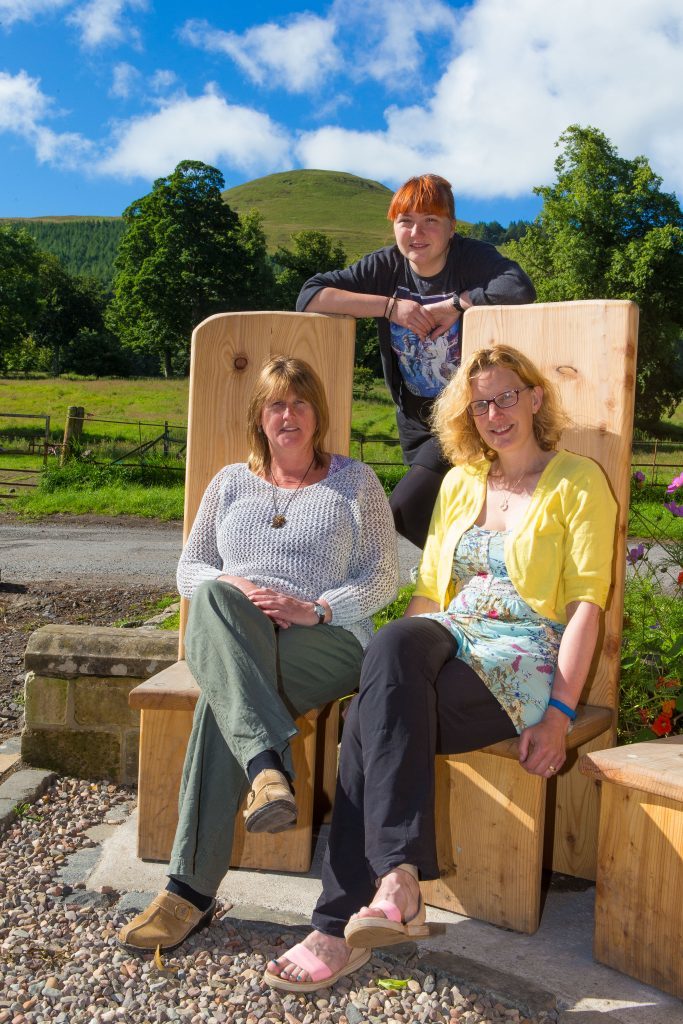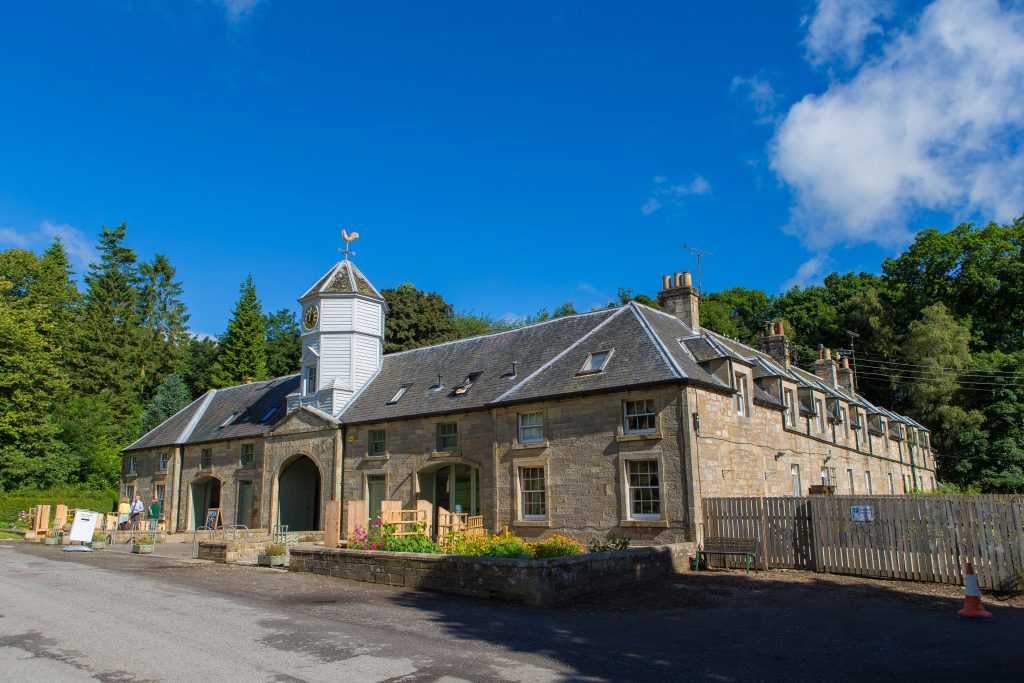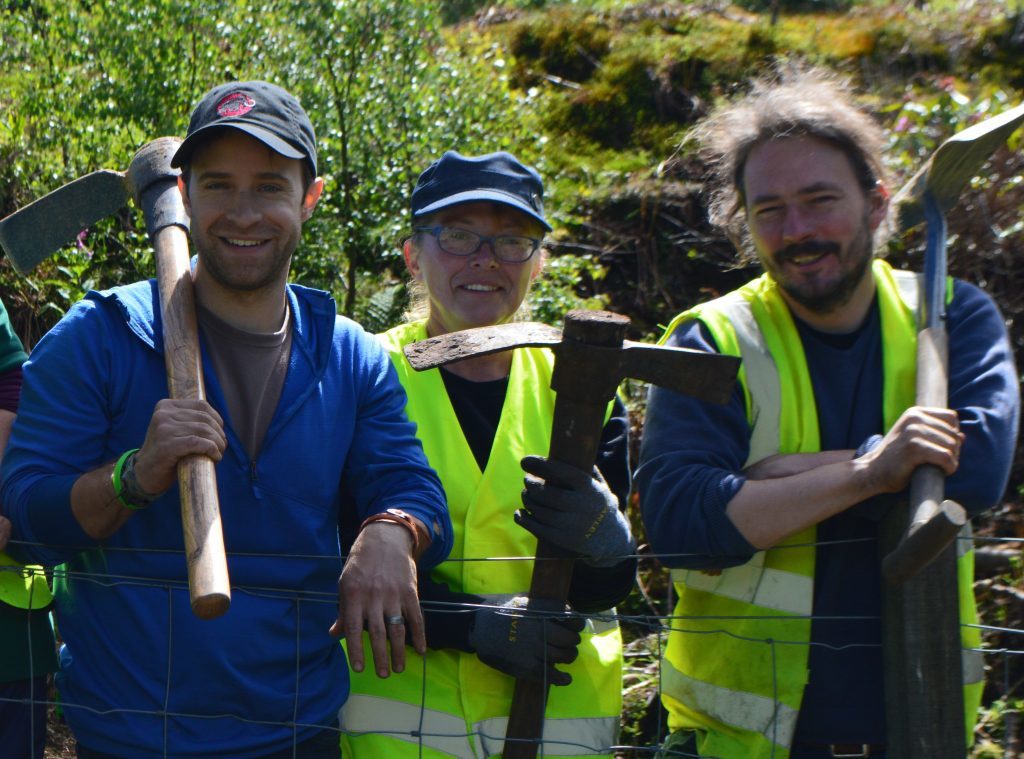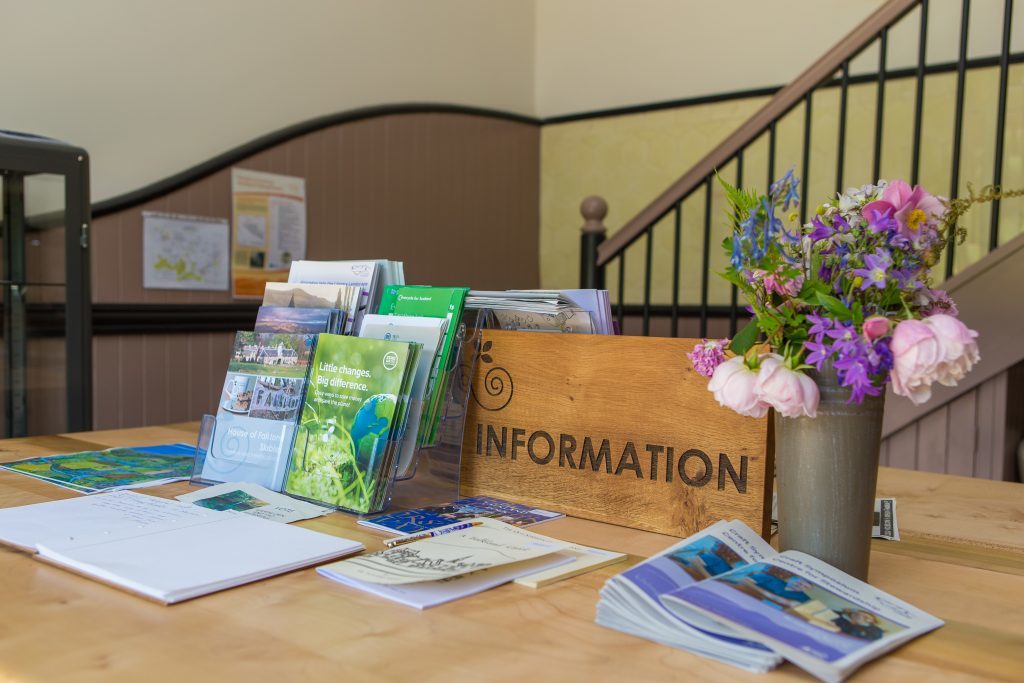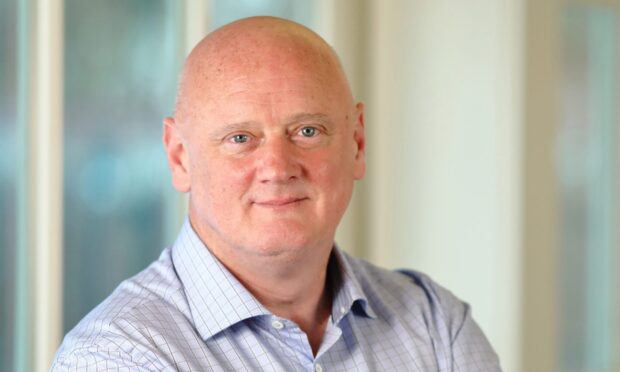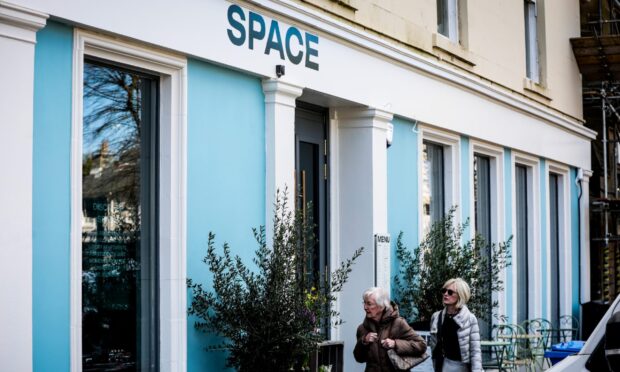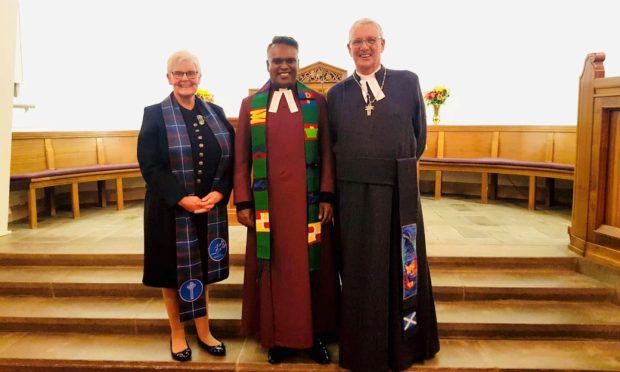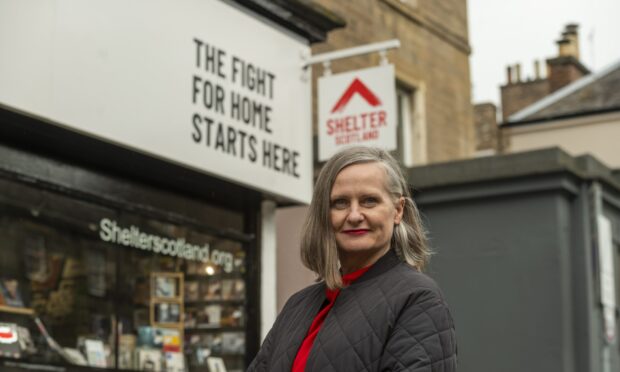The teenagers reluctantly traipsed up the lower slopes of the East Lomond with their hands in their pockets. Some were wearing white hoodies and brand new Converse trainers. Many had never been on a hill before let alone been expected to write poetry about their experience.
Yet after seven weeks of visits, the S3 group from Beath High School in Cowdenbeath had learned a bit more about the land, a bit more about writing and quite possibly a bit more about themselves.
The pinnacle of their efforts was a magical video they produced featuring poetry inspired by the landscape and sounds they collected ranging from the shake of oak branches and tumble of burns to the beat of the Maspie Den waterfall.
The pupils were taking part in the pioneering Journeys into the Literary Landscape project which uses the stunning landscape of Falkland Estate with its forests, waterfalls and quiet, magical spaces, to inspire change in their individual and collective perceptions.
Launched to nine local high schools and 260 pupils in 2014, the project, hosted by Falkland Centre for Stewardship, was led by professional writers and sound artists “to inspire young people to develop a deeper connection with the poetry, literature and landscape of the Lomond Hills and to encourage them to develop their own creative response to the landscape in a medium of their choice.”
With more pupils embarking upon their own Journey into the Literary Landscape after the summer break, Helen Lawrenson, the director of the Falkland Centre for Stewardship on Falkland Estate cites this as a perfect example of the stewardship ethos centred around core issues of wood, food and crafts.
But it’s just one aspect of the centre’s work which ranges from community archaeology projects to hut building courses and forestry.
Sunshine
“Landscape is everything here,” explains Helen, 47, as we enjoy the sunshine beneath the majestic peak of the East Lomond.
“Journeys into the Literary Landscape was all about engaging secondary school students with poetry and the landscape. When you see the students come out you think no way are they going to be in the least bit interested writing a poem. But by the end of the day there are some brilliant poems, and they are just inspired by the landscape. All of this goes back to everything stemming from the landscape.”
Growing up in Falkland, Helen studied history at Edinburgh University and did a Masters in tourism at Strathclyde. She was a guide at Falkland Palace during the summer before moving to Essex to work in tourism, moving to the Fruitmarket in Edinburgh and Heritage Lottery Fund as a grants officer.
She returned to Falkland to raise a family, taking up a role with what was then the Falkland Heritage Trust.
But in the years since, she has helped the Falkland Centre for Stewardship, led by the hereditary keeper of Falkland Palace Ninian Crichton Stuart and a team of passionate trustees, to open the estate up more to the public.
The 1500 hectare estate, which includes the East Lomond Hill, is roughly split into woodland, farms and then the Victorian designed landscape around the Stables and the old House of Falkland. The old school building was originally built as a home by the 19th century estate owners, the Bruce Tyndalls.
Today the building houses the award winning Falkland House School.
The estate was purchased by the Third Marquis of Bute – Ninian Crichton Stuart’s great grandfather – and the on-going restoration of the estate stems from there.
Protected
“It’s that notion of stewardship – looking after the assets you happen to have responsibility for and making sure they are protected and cared for for future generations, “ explains Helen.
“We’ve started to develop programmes around this ethos of stewardship. Wood, food and craft. If we stick to those themes they all seem to interlink really well.
“But it’s not just about the built heritage of the estate. We are all about people engaging with the place in a meaningful way. People are welcome to walk up and down here now. It’s not so much the hidden place it felt like in the past.”
An important aspect, in association with the Fife Coast and Countryside Trust, has been the soon to end Living Lomonds project which literally aimed to re-connect people with the hills.
Project officer Audrey Peebles said: “A lot of it has been about getting communities on either side of the hill to talk to each other.
“The other big thing we are doing as direct legacy of Living Lomonds is we have secured more money from Big Lottery in project called Our Bright Future. And that’s to continue our rural skills training of young people. That’s going to last at least five years.”
Whilst much of the funding comes from the likes of the Heritage Lottery Fund, Climate Challenge Fund and Fife Environment Trust, it’s important to have revenue streams that are not grant dependent, adds Audrey.
A recent craft symposium in August was a good example of this, adds Helen.
*For more information go to www.centreforstewardship.org.uk
